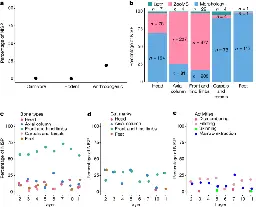Middle and Late Pleistocene Denisovan subsistence at Baishiya Karst Cave - Nature
Middle and Late Pleistocene Denisovan subsistence at Baishiya Karst Cave - Nature
Zooarchaeological and proteomic analyses of bones from Baishiya Karst Cave on the Tibetan Plateau identify a hominin rib specimen, and provide insight into the ways Denisovans interacted with their surrounding environment and made use of animal resources.

Genetic and fragmented palaeoanthropological data suggest that Denisovans were once widely distributed across eastern Eurasia
Using zooarchaeology by mass spectrometry, we identify a new hominin rib specimen that dates to approximately 48–32 thousand years ago (layer 3). Shotgun proteomic analysis taxonomically assigns this specimen to the Denisovan lineage, extending their presence at Baishiya Karst Cave well into the Late Pleistocene.
The chaîne opératoire of carcass processing indicates that animal taxa were exploited for their meat, marrow and hides, while bone was also used as raw material for the production of tools. Our results shed light on the behaviour of Denisovans and their adaptations to the diverse and fluctuating environments of the late Middle and Late Pleistocene of eastern Eurasia.